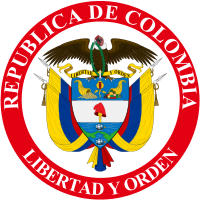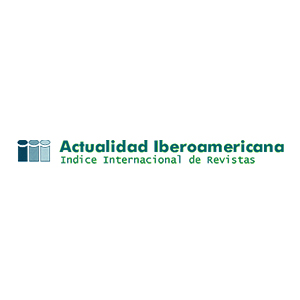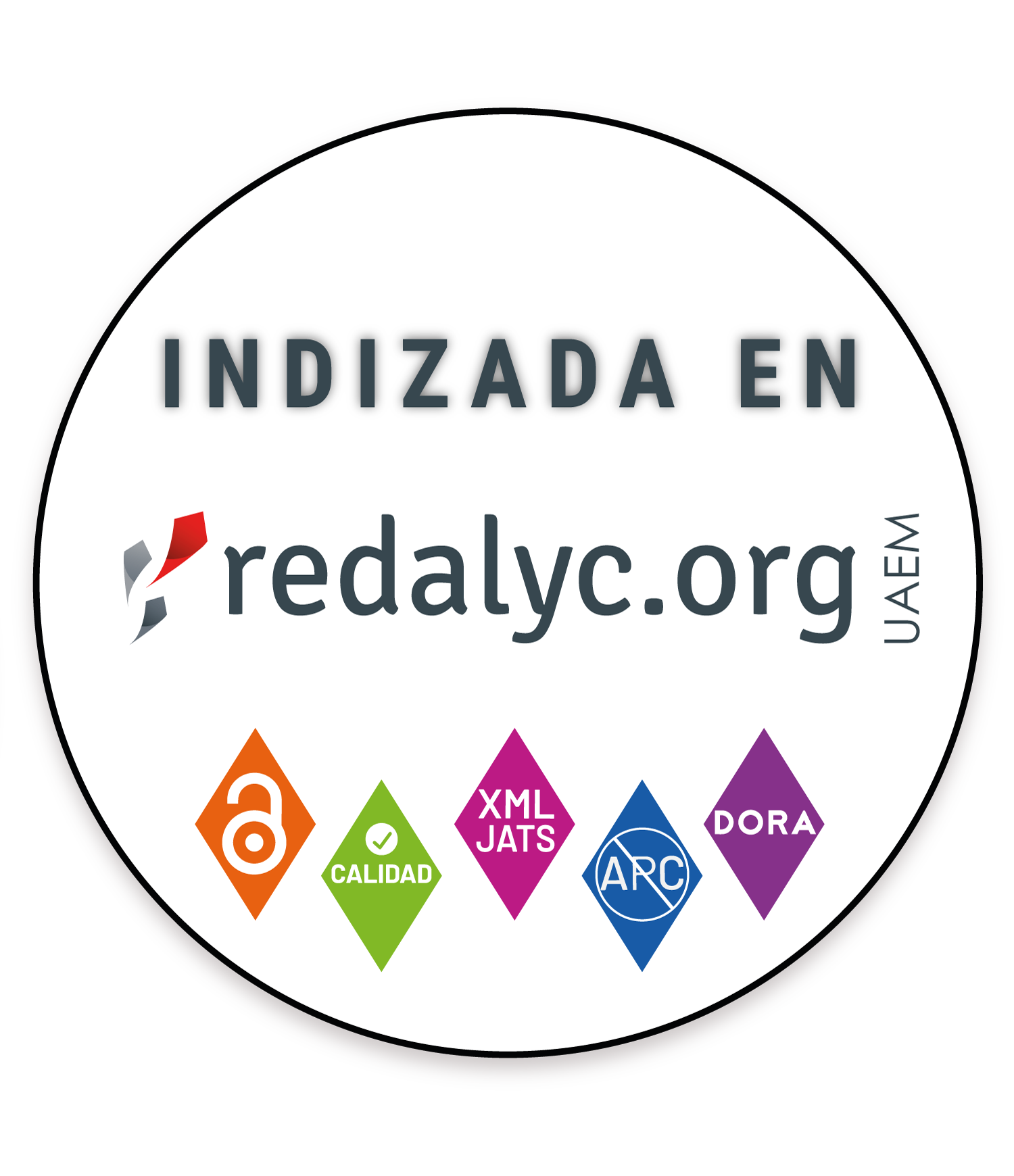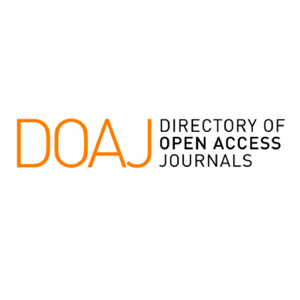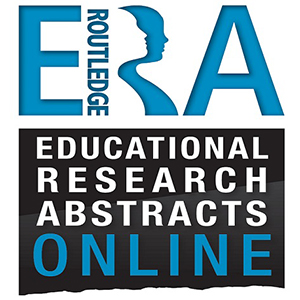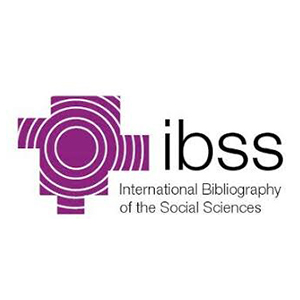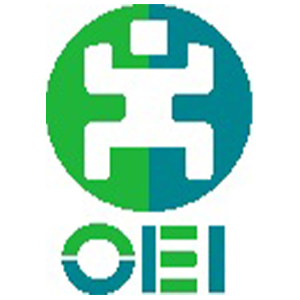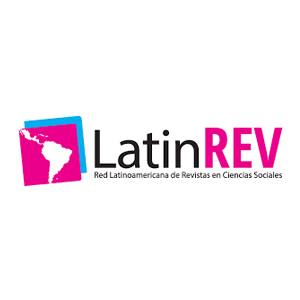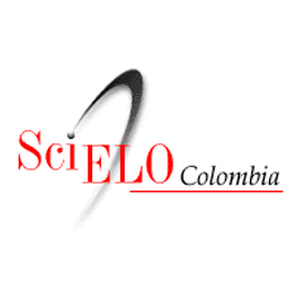All Art is Revolution: Global Performance and Social Change
Todo arte es Revolución: Actuación Global y Cambio Social
Toda Arte e Revolução: Atuação Global e Mudança Social
El teatro puede ser un medio de transformación tanto personal como social. Este artículo examina la teoría y describe las prácticas necesarias para articular la confluencia de diversos aspectos del arte como activismo. Esta aplicación específica del arte como agente de cambio, trae consigo la combinación de herramientas terapéuticas de sanación, preceptos de activismo, teorías de la escolaridad, y técnicas de artes escénicas. El teatro es una práctica activa que permite la investigación y la profundización, siempre que mantiene un nivel de excelencia a través de su búsqueda estética. Fusionando las fuerzas del arte y del activismo, de la formalización académica y el efecto terapéutico del arte, este ensayo intenta una aproximación al teatro -tanto local como global- que se asume como agente de transformación y tiene un compromiso con el cambio social. A través del examen de los linderos, los riesgos y los dilemas en el campo del teatro socialmente comprometido, el escrito intenta hacer un escrutinio de las mejores prácticas posibles para consolidar un arte teatral que opere como un agente de cambio positivo y útil.
arte, construcción de paz, cambio social, teatro como medio (es)
arte e construção de paz, mudança social, teatro como médio (pt)
References:
A’ness, F. (2004). Resisting amnesia: Yuyachkani, performance, and the postwar reconstruction of Peru, Theatre Journal, 56(3), 395-414.
Auyero, J. (2003). Contentious Lives: Two Argentine Women, Two Protests, and the Quest for Recognition. Durham, NC: Duke University Press.
Barish, J. (1981). The Anti-theatrical Prejudice. Berkeley, CA: University of California Press.
Bentz, V. M., & Shapiro, J. J. (1998). Mindful Inquiry in Social Research. Thousand Oaks, CA: Sage.
Boal, A. (1995). The Rainbow of Desire. Routledge, London and New York.
Boal, A. (2005). Legislative Theatre. United Kingdom: Routledge.
Chayes, A., & Minow, M. (2003). Imagine Coexistence: Restoring Humanity after Violent Ethnic Conflict. San Francisco, CA: Jossey- Bass.
Cockburn, C. (1998). The Space Between Us: Negotiating Gender and National Identities in Conflict. London: Zed Books Ltd.
Cohen, C. (2011). Acting Together: Performance and the Creative Transformation of Conflict. Oakland, CA: New Village Press.
Cohen-Cruz, J., & Schutzman, M. (2006). A Boal Companion: Dialogues on Theatre and Cultural Politics. London, United Kingdom: Routledge.
Darby, J., & Mac Ginty, R. (2003). Contemporary Peacemaking: Conflict, Peace Processes and Post-war Reconstruction. New York, NY: Palgrave MacMillian Ltd.
Fox, J. (1994). Acts of Service. New Paltz, NY: Tusitala Publishing.
Febres, S. L. (2011). Memory of Violence and Drama in Peru. The Experience of the Truth Commission and the Yuyachkani Theater Group. Speech delivered at Brandeis University, available at: http://www.brandeis.edu/ethics/pdfs/Memory_of_Violence_and_Drama_in_Peru_Salomon_Lerner_Febres_Just_Performance_Keynote_Brandeis_2011.pdf.
FreeDimensional Advo-Kit (2012), available at www.freeDimensional.org
Freire, P. (1992). Pedagogy of the Oppressed. New York, NY: Continuum.
Ganguly, S. (2010). Scripting Power. Kolkata, India: Biplab Das.
Hickman, G. (2010). Leading Change in Multiple Contexts. Thousand Oaks, CA: SAGE Publications.
Horowitz, S. (2012). It’s not easy being a Jewish artist in a Muslim land. Jewish Daily Forward.
Johnson, A. G. (2006). Privilege, Power and Difference. New York, NY: McGraw-Hill Companies, Inc.
Kegan R., & Lahey L. L. (2009). Immunity to Change. How to Overcome It and Unlock the Potential in Yourself and Your Organization. Boston, MA: Harvard Business Press.
Kershaw, B. (1992). The Politics of Performance. Radical Theatre as Cultural Intervention. New York, NY: Routledge.
Lacquer, W., & Rubin, B. (eds.) (1969). The Arab/Israeli Reader. New York, NY: Penguin.
Lederach, J. P. (2005). The Moral Imagination: The Art and Soul of Building Peace. New York, NY: Oxford University Press.
Levit, N., Verchick, R., Minow, M. (2003). Feminist Legal Theory. New York: NYU Press.
Litwar (2014). Checkpoints, Teaching Theatre in Conflict Zones. 2014 TCG National Conference: Crossing Borders {Art | People} blog salon, curated by Caridad Svich available at: http:// http://www.tcgcircle.org/2014/05/checkpoints-teaching-theatre-in-conflict-zones/
Lyman, L., Strachan, J., & Lazaridou, A. (2012). Shaping Social Justice Leadership. New York, NY: Rowan & Littlefield Publishers.
Mac Ginty, R. (2013). The Routledge Handbook of Peacebuilding, New York, NY: Routledge.
Miles, J., & Litwak, J. (1987). Women Heroes. Six Short Plays from the Women’s Project. New York, NY: Applause Books.
Mohan, D. (2004). Reimagining Community. Scripting Power and Changing the Subject through Jana Sanskriti’s Political Theatre in Rural North India. Journal of Contemporary Ethnography, 33(2), 178-217.
Northouse, P. G. (2010). Leadership. Theory and Practice. Thousand Oaks, CA: Sage Publications.
Nussbaum, M. (2010). Not for Profit. Why Democracy Needs the Humanities. Princeton, NJ: Princeton University Press.
Peters, R. T. (2004). In Search of the Good Life. The Ethics of Globalization. New York, NY: The Continuum International Publishing Group.
Prentki, T., & Preston, S. (Eds.) (2008). The Applied Theatre Reader. New York, NY: Routledge.
Rohd, M. (1998). Theatre for Community, Conflict and Dialogue. The Hope is Vital Training Manual. Portsmouth, NH: Heinemann.
Sanger, M. (1919). Birth Control Review. New York: Bretano's.
San Suu Kuy, A. (1991). Freedom from Fear: And Other Writings. London, UK: Penguin.
Senge, P. (1994). The Fifth Discipline Fieldbook. New York: Doubleday.
Sinclair, A. (2007). Leadership for the disillusioned. Australia: Allen & Unwin.
Thalhammer, K., O’Loughlin, P., McFarland, S., Glazer, M., Shepela, S., & Stoltzfus, N. (2007). Courageous Resistance. The Power of Ordinary People. New York: Palgrave.
Tobach, E. (2008). Women and Peace. Peace and Conflict: Journal of Peace Psychology, 14(1), 15-21.
Young, I. M. (2010). Responsibility for Justice. Cambridge, Mass.: Oxford University Press.
Young-Jahangeer, M. (2013). ‘Less than a dog’: interrogating theatre for debate in Westville Female Correctional Centre, Durban South Africa. Research in Drama Education: The Journal of Applied Theatre and Performance, 18(2), 200-203.
APA
ACM
ACS
ABNT
Chicago
Harvard
IEEE
MLA
Turabian
Vancouver
Descargar cita
Citaciones

Métricas PlumX
Visitas
Descargas
All Art is Revolution: Global Performance and Social Change
Todo arte es revolución: actuación global y cambio social
Toda arte e revolução: Atuação global e mudança social
Jessica Litwak*
* Jessica Litwak, PhD, RDT www.jessicalitwak.com is an international theatre practitioner, drama therapist and recognized leader in the field of Socially Engaged Theatre. She is a graduate of RADA, NYU and Columbia with a BFA in acting, an MFA in playwriting and a Ph.D. in Theatre as a Vehicle for Leadership and Change. Litwak has over thirty years' experience in theatre as an award winning playwright, Equity actor, innovative educator, director, and puppet builder. Her company the H.E.A.T. Collective www.heatcllective.org produces workshops, events, and productions that bring together Healing, Education, and Activism through Theatre. She has worked extensively in Palestine/Israel, Lebanon, Egypt, Iraq, Turkey, and Central, Eastern, and Western Europe. Litwak is a trained practitioner of Playback, Psychodrama, and Theatre of the Oppressed. She is the Artistic Director of The New Generation Theatre Ensemble (www.ngte.org).
She is a convener of the Arts and Peace Commission for The International Peace and Reach Association and an arts curator for The Rhodes campaign for European City of Culture. She is on the steering committee of Theatre Without Borders, and a Fulbright Scholar.
Article received September 2016, accepted October 2016.
Abstract
Theatre can be a vehicle for personal and social change. This paper describes the practice and theory of bringing together various aspects of art as activism. This specific application of art as change involves combining tools of healing, precepts of activism, theories of scholarship, and techniques of theatrical art. Theatre is an active practice, supporting both research and outreach while maintaining a standard of excellence in the art form through aesthetics. Merging the forces of art and activism, scholarship and the therapeutic effects of art, this essay aims to look at both local and global theatre work devoted to social change. Examining the boundaries, risks, and dilemmas in the field of socially engaged theatre, as well as performance and peacebuilding, this paper aims to scrutinize the best practices for theatre art as an agent of useful change.
Keywords: art and peacebuilding, social change, theater as vehicle.
Resumen
El teatro puede ser un medio de transformación tanto personal como social. Este artículo examina la teoría y describe las prácticas necesarias para articular la confluencia de diversos aspectos del arte como activismo. Esta aplicación específica del arte como agente de cambio, trae consigo la combinación de herramientas terapéuticas de sanación, preceptos de activismo, teorías de la escolaridad, y técnicas de artes escénicas. El teatro es una práctica activa que permite la investigación y la profundización, siempre que mantiene un nivel de excelencia a través de su búsqueda estética. Fusionando las fuerzas del arte y del activismo, de la formalización académica y el efecto terapéutico del arte, este ensayo intenta una aproximación al teatro -tanto local como global- que se asume como agente de transformación y tiene un compromiso con el cambio social. A través del examen de los linderos, los riesgos y los dilemas en el campo del teatro socialmente comprometido, el escrito intenta hacer un escrutinio de las mejores prácticas posibles para consolidar un arte teatral que opere como un agente de cambio positivo y útil.
Palabras clave: arte y construcción de paz, cambio social, teatro como medio.
Resumo
O teatro pode ser um meio de transformação tanto pessoal quanto social. Este artigo examina a teoria e descreve as práticas necessárias para articular a confluência de diversos aspectos da arte como ativismo. Esta aplicação especifica da arte como agente de mudança, traz consigo a combinação de ferramentas terapêuticas de sarar, preceitos de ativismo, teorias da escolaridade e técnicas das artes cênicas. O teatro é uma prática ativa que permite a pesquisa e o aprofundamento, sempre que mantém um nível de excelência por meio de sua procura estética. Fusionando as forcas das artes e do ativismo, da formalização acadêmica e o efeito terapêutico da arte, este ensaio tenta uma aproximação ao teatro �tanto local como global- que se assume como agente de transformação e tem um compromisso com o cambio social. Por meio do exame das fronteiras, os riscos e os dilemas no campo do teatro socialmente comprometido, o escrito tenta ser um escrutínio das melhores práticas possíveis para consolidar uma arte teatral que opere como agente de cambio positivo e útil.
Palavras chave: arte e construção de paz, mudança social, teatro como médio.
Introduction
If I can't dance, I don't want to be a part of your revolution.
Emma Goldman
The only way through which I personally have been able to effect change in the world is theatre. As an artist-activist, my work is devoted to the exploration of theatrical practices for social change. Whether performing, writing, or teaching, my offerings to global change are limited to the realm of creative expression and therefore are sometimes difficult to identify as effective social action. I continue to attempt to bridge the gap between my activism and my art. As a scholar, I am fascinated with the borders between art and scholarship, as well as the gaps and the overlaps of activism and scholarship. The goal of this essay is to develop a useful discussion about global theatre work devoted to social change, which hopefully intersects all three disciplines: art, activism, and scholarship. I will attempt to examine the boundaries, look at some of the risks and dilemmas in the field of theatre art and social justice or performance and peacebuilding, and to examine the best practices for theatre art as an agent of useful change locally and globally.
After spending a great deal of time working as a North American Jewish theatre artist in the Middle East, I became acutely aware of the inner conflicts I was feeling about issues I was confronting first hand. My attitude towards the conditions of oppression, poverty, gender power differential, and violence was constant, but my feelings regarding my own cultural identity had shifted. I had to look carefully at my relationship to the divisions between Eastern and Western cultures, Jewish and Arab cultures, and the consistent tension between the Global North and the Global South. I could not deny my heritage or my homeland, but the more I ventured out into the developing world, the more conflicted I became about my true place as an artist, an activist, and even as a scholar. My heart was in the East, my children in the West, my Jewish identity strong but my criticism of Israel just as powerful, my ethnicity undeniable but my consciousness divided. My salvation came the day I was interviewed for an article in The Jewish Daily Forward Arts and Culture section, entitled "It Isn't Easy Being a Jewish Theatre Artist in a Muslim Land." The interviewer asked me very personal questions about recent experiences
working in Iraq, Lebanon, Palestine, and Egypt. I answered honestly about my identity conflicts. She said: "Oh, you are confused." "No," I countered, "please, don't write that." "Then you are ambiguous." "No, I am never ambiguous!" I told her that instead of getting mired in these contradictions, I embraced the state of mind Lederach calls "paradoxical curiosity." I told her that I tried to see these inner and outer oppositions as opportunities for interesting, albeit perplexing dialogue. After stating this defensively to the interviewer, the stance became real for me. The more I embrace the paradox, the more creative my research and artistry becomes, and the heartier my activist convictions.
All Art is Revolution
Everywhere I go I find a poet has been there before me.
Sigmund Freud
Life is always filled with intersections that change the course of one's road. In my case, it was some key conversations with one of my father's friends that changed mine. Earl Shorris was one of the most influential people in my life. He was a social critic and author whose interviews with prison inmates for a book inspired him to start a now nationally recognized educational program that introduces the poor and the unschooled to Plato, Kant, and Tolstoy. He was sharply critical of Western culture as sliding toward plutocracy and materialism, and became best known in his final years for founding the Clemente Course in the Humanities, which earned him the National Humanities Medal, presented to him in 2000 by President Bill Clinton. Earl wanted to save America with books. In an interview in Harpers Magazine he said:
I have wished for many years to be a physician to my beloved country. The means to care for it is clear. I was revived by love and ethics. I am not unique: no man, no woman is a metaphor; that is the place of gods. I do not know who will take America in their arms to revive her. No nation is forever. (Harper's Bazaar Magazine, 2012)
Earl grew up poor in Texas and Mexico, went to The University of Chicago at age 13, and at one point went to work for a Madison Avenue advertising agency to support his wife and two sons while he wrote dozens of books late at night. Once, right after my husband who was a PR executive left me heartbroken with two small children for another woman, Earl told me that he never liked my husband because he never trusts anyone in PR. He told me a story that changed my life. This is a recollection of our private talk, in his imagined voice.
Earl: I was an AD man. I was a big guy in a big firm on Madison Avenue, top of the top, cream of the cream. Silk shirts, handmade ties, bone buttons. Supporting a -wife and two sons. Worked hard 6 days a week from 7 am until nearly 10 each night. Wrote novels on Sundays�but on Saturday I worked. I drank the martinis, carried the brief case tooled in Italian leather. My shoes were polished to a mirrored shine. Black guy in the lobby did them every Thursday afternoon. Didn't matter what I thought, I was a company man. I came up with the bright ideas that silenced boardrooms. Those one of a kind of light bulbs that made everyone wince inwardly: why didn't I think of that? I was such a hot young executive that they handed me one of their biggest account: Nestlé's. Chocolate powder. Cereal. Baby formula. Multi-millions resting on my brainpower. And then one day we got a report of record numbers of babies dying in Africa. A Nestlé boycott launched on July 7, 1977, was prompted by Nestlé's "aggressive marketing" of breast milk substitutes that had led to the deaths of thousands of babies who did not have access to clean water with which to mix the powder and who needed the antibodies in their mother's milk as an essential part of their immune system. The head of the board crowded into my office. They begged me to do something, save them. Save Nestlé. I agreed to take 74 file folders home and read through the stack of papers over the weekend. I did. Skipped lunch, dinner, just read and drank and read more. I came in Monday morning, the Board was hovering. I invited them into my office and informed them of the good news: I could resolve their PR problem instantly�in just three words�they only had to follow my directions. I could feel them getting erections, leaningforward in their seats, eyes wide, waitingfor my three magic words. "STOP. KILLING. BABIES." I said. Then I picked up my briefcase and left Madison Avenue. And I've never looked back.
Earl's convictions and strength of character bolstered me through many tough years of balancing theatre and single parenthood. Much later, when I was having a career crisis, we had another impactful conversation. Because of the inherent narcissism of the theatre, I was struggling with the conflict I felt between my need to make plays and my strong desire to be of service to the world. We were at a Chinese restaurant with his wife and my father. I talked non-stop about wanting to leave the theatre to do something more useful. He listened carefully, reminding me of the plays of mine he's seen and enjoyed, but also giving me guidance about opportunities for activism. We were all outside on the street after dinner, our two families walking in separate directions, when I heard him call my name. I stopped and turned back to him. "Remember, Jessica," he shouted down the sidewalk, "all art is revolution."
All art, especially all critical art, is not only revolution, it is at risk. Even in the West, where artists are free to make art, there are limits to artistic freedom, and prejudices against the validity of artist's work. The theatre is an especially threatened medium because, despite its roots, which were central to the workings of society, theatre has become less accessible, more expensive, less funded, and more ratified.
As Westerners, we do need to be aware of our artistic liberties. A colleague of mine in Singapore recently asked me quite sincerely, "How long does it take for the government to give you official permission to produce a play after you've applied for approval?" She could hardly believe that basically anyone can produce basically anything in the United States. However, it was also shocking that national subsidies for these productions were essentially nonexistent.
Nevertheless, wide our external freedoms might range, the subtleties of exclusion, prejudice, and censorship are still prevalent, both inside the theatre and outside of the profession. One aspect of our self-inflicted limitations on artistic liberty is the American unwillingness to look deeply at the shadows of our own culture. This blind spot to our own national murkiness affects liberal theatre artists as much as conservative politicians.
I was once commissioned by a famous actress known for her liberal politics to write a play about the history of reproductive rights. She wanted the play to feature a court scene and the story of Margaret Sanger, the founder of Planned Parenthood. I deeply researched the material for the play, sitting in on the hearings for Plan B (the morning-after pill), interviewing staff at NAROL, The Center for Reproductive Rights, The National Abortion and Reproductive Rights Action League, the ACLU. I also went undercover to the other side of the debate posing as the mother of a pregnant 14-year-old to Project Rescue, Citizens United for Life, and a Crisis Pregnancy Center. Through this research I realized two things that surprised me and changed some of the content of the play. From the liberal side, I learned that there was a history of racial tension and racism in the reproductive rights movement. What was most shocking to me was that these tensions came from liberal women, most specifically between Caucasians and African Americans. Margaret Sanger herself had been accused of racism when she supported the theory of eugenics (the science of controlling genetics to improve the population) and believed in some compulsory sterilization plans to produce more children "from the fit and less from the unfit" (Sanger 1919, p. 12). Sanger was a defender of these ideas for the purpose of protecting poor and disabled women without access to birth control who were victims of multiple unwanted pregnancies. However, good her social intentions were, the effect of her views was to create a rift between black and white women that has lasted decades. I read the work of Angela Davis who was furious at Margaret Sanger and the liberal white women driving the reproductive rights movement for ignoring the needs and voices of African American women. The actress with whom I was working spoke to her friend Gloria Steinem, who had the opposite view and argued for Sanger and against Davis's claims. Because this seemed like such a rich, ripe issue, I put versions of Gloria and Angela into the play, and included the issues of racial tensions between women in the dramatic historical conversation about reproductive rights. I also discovered the unexpected kindness of the Pro-life community. As I presented my case as a soon to be grandmother to the people in these various organizations (whose opinions I personally deplored), I was offered money, housing, diapers, counseling; one man gave me his credit card number so I could take my young daughter out to dinner and "love her up" and assure her that we were ready for the baby. I doubt if any of my dear friends at The Nation would have responded so generously, and even though I disagreed with their methods and their ideas about a woman's freedom to choose, I was somehow touched by their warmth. I also put this in the play, devilifying the opposition. The actress who commissioned me was so infuriated by my theatrical inclusion of these complexities�the shadows on "our side" and the attributes of theirs�that she walked off the production, taking her funding with her, and has not spoken to me since.
The global challenges to artistic freedom are far more extreme than my professional disappointments. My work with arts and human rights organizations has exposed me to many artists who are experiencing prison sentences, death threats, and rejection from family and community because of their artistic practice. I have worked directly with an actor in Afghanistan, a playwright in Iran, and a cartoonist from Cameroon, among others, each one either attacked, threatened, imprisoned or tortured for their creative expression.
It is also important to be aware of how theatre is seen by the population outside the profession. Barish (1981) describes a prejudice against theatre that permeates Western culture in insidious ways extending even to the level of language.
Most epithets derived from the arts are laudatory when applied to life; a landscape can be poetic, a man's struggle with adversity epic, a woman's beauty as lyric. In an old movie comedy, an affected matron expressed her appreciation of dinner by declaring 'the fish was a poem,' but with infrequent exceptions, terms borrowed from the theatre: theatrical, melodramatic, stagey, etc., tend to be hostile or belittling. (p. 1).
Can theatre be fully embraced by the rest of society? Can theatre change the world? I believe that with useful plays, moral imagination, and strong leadership, it can. Person by person, community by community, theatre as an art form can increase communication, mental and physical well being, and self-esteem. Theatre as a means of expression can enhance peace building and social justice. Because of the expressive and collaborative quality of the art form, theatre allows each person to be seen and embraced by colleagues and audience alike. The act of being seen is in itself a small event of large political importance. As Allan Johnson writes in his book on power and privilege: "Of all human needs, few are as powerful as the need to be seen, included, and accepted by other people" (Johnson, 2006).
Many artists and peace builders over the ages have believed and claimed that theatre has the power to change the world. The playwright Bertolt Brecht wanted plays to teach. In his epic theatre he wanted the theatre to be an adult exchange between actors and audience. Not spellbinding or false, not designed to make one feel, but to make one think. He was devoted to the idea of theatre as social transformation. Febres, who was one of the leaders and facilitators of the Truth and Reconciliation Commission in Peru, said "Theatre is an ally to traditional justice." The same of course could be said of poetry, certainly of spoken word performances. Febres said, "Art restores meaning in bringing us as responsible human beings face to face with undeniable facts and circumstances" (Febres, 2011, p. 12). John Paul Lederach (2005), describing the need for a moral imagination to exist inside each of us, states, "If we are to survive as a global community we must understand the imperative nature of giving space and to the moral imagination in all human affairs... we must imagine beyond what is seen." He also affirms, "The moral imagination requires the capacity to imagine ourselves in a web of relationships that includes our enemies (p. 354). This concept of peace can be ethically challenging for those who believe that the pursuit of justice trumps the reach for peace, and that artists entering conflict zones to build peace are encouraging passive acceptance of oppression. According to Nussbaum (2010), the humanities are essential in the movement towards a healthy democracy. Nussbaum claims that it is vital for human beings to approach each other as something other than instruments or obstacles, "we seem to be forgetting about the soul, about what it is for thought to open out of the soul and connect person to the world in a rich, subtle and complicated manner" (p. 11). Though science and technology are important, she states that her concern is that creative and literary abilities crucial "to the creation of a decent world culture capable of constructively addressing the world's pressing problems are at the risk of getting lost" (p. 13).
In my opinion, there are three forms of theatre work: theatre of process, where the artists rank the experience and expression of art as the highest ambition; theatre of product, in which the money drives the art and production is effected by commercialism success defined by fame and wealth; and theatre of impact, a theatre practice striving for social change, the central goal being the effect of the work on the community. I believe in the alternative theatre community where social justice plays an important role and these three viewpoints and methods cross over constantly. According to Kershaw (1992), mainstream theatre critics and historians have failed to recognize "the nature and extent of the socio-cultural impact of alternative and community theatre" (p. 42).
Whether or not theatre can effect change is not only a question that rests on the opinions of mainstream critics, the question of change reaches more deeply into the study of human nature itself. Resistance and immunity to change can be a product of the human mind as much as a result of social oppression. The socialized mind, which influences how one receives information, brings a person into hyper consciousness of his/her surroundings, in my mind weakening the thinker into a follower mentality; the self authorizing mind, according to Kegan and Lahey (2009), has the beginnings of leadership and self actualization. The self-transforming mind not only envisions change but also gets the job done.
Inspired by Earl Shorris and many other activists engaging the world through art and literature, it is my objective to continue to research ways to fight for artistic freedom both locally and globally. A world without art is a world without intelligence, depth, color or compassion. It is also my desire to see theatre as a craft, as a healing agent, an educator and vehicle for social change, thrive and continue to enrich the world.
Three paradigms: Acting Together, TWB, freeDimensional
If you don't like the way the world is, you have an obligation to change it.
Marian Wright Edelman
The ethics of global artistic engagement is complex. I work for three organizations, each with a different ethical orientation. Theatre Without Borders (TWB) is simply a network for global artists dedicated to cultural exchange. TWB remains politically nonpartisan and dedicated to diplomacy. Acting Together on the World Stage is devoted to "peace building" through performance. The mission of the Acting Together project stresses "moral imagination," a concept of conflict transformation through artistic expression. This idea of peace can be ethically challenging for those who believe that the pursuit of justice trumps the reach for peace, and that artists entering conflict zones to build peace are encouraging passive acceptance of oppression. Cynthia Cohen, the founder of Acting Together, argues that justice begins with peace. Cohen (2011) states, "In the face of the greed and violence that permeate our political, cultural, environmental and social relationships, what choices will we human beings make about building peace? How will we act�both on the stage and in the world�in relation to each other, to our planet, and to our own humanity?" (p. 112). As Lederach writes, "Reach out to those you fear. Touch the heart of complexity. Imagine beyond what is seen" (p. 112). The third organization is called freeDimensional (fD); one of its purposes is to be an "artists' safety net" and the organization's mission is to work for social justice by protecting human rights. As co-leader of the Theatre Artists in Distress Services Committee for fD, it is my job to field requests from global artists in crisis. fD is very vocal about political issues and takes sides when it comes to freedom and oppression in conflict zones throughout the world. When Salomon Lerner Febres headed up the Truth and Reconciliation Committee in Peru, he encouraged crowds to bring moral judgment to every action and to use truth to heal national and international wounds, through art.
Whatever the inspiration for action is, be it peace, diplomacy or social justice, any action geared towards building community whether globally or locally is essential for humanity's survival. Iris Young (2010), in presenting her social connection model of collective responsibility, writes, "It assumes a misleading idea that each person can be independent of others and internalize the costs of their own actions" (p. 24). Any goal for human connection no matter the method is a noble and necessary aspiration.
The Dilemmas, Peace v. Justice
When the power of love overcomes the love of power the world will know peace.
Jimi Hendrix.
If you tremble with indignation at every injustice then you are a comrade of mine.
Ernesto "Che" Guevara.
Always forgive your enemies. Nothing annoys them so much.
Oscar Wilde.
Cultural workers and globally engaged artists can work towards change with either peace or justice as their ultimate goal. Although either word means that there is a focus on change for good, and both goals indicate service-driven creativity, it is good, in my opinion, for artists to clarify their mission and be able to speak about the difference between these two terms in relation to their artistic practice in the context of specific circumstances. First, we must look at the concepts of peace and justice themselves.
Peace is a difficult word for people experiencing violent conflict and/or oppression. People in conflict sometimes mistrust the term peace as an avoidance of injustice, especially when there is often such a gap between the theory of peace and practice. Mac Ginty (2013) states that whatever their circumstances may be, people cannot be made to practice peace. He argues the importance of distinguishing between the terms peace, coexistence, conflict transformation, and reconciliation. Minow (2003. pp. 9 y 10) states that to her reconciliation seemed "too sentimental a word." He claims that coexistence is a colder, more realistic term, "you can coexist with people you hate" (p. 9). Minow sees the use of dramatic entertainment as an "effective catalyst for coexistence;" by serving as a vehicle to promote mutual understanding, "role-playing provides a unique opportunity for identification with the 'other' facilitating better understanding and empathy" (p. 10).
In research for my dissertation, I am looking at artists as justice advocates and peace builders by focusing on a period in history when, through poetic exchange, two opposing cultures enjoyed coexistence. Perhaps the best example of Jewish and Muslim interaction, dialog, co-worship, and artistic co-creation is found in the relations between Jews and Arab Muslims in the 10th and 11th centuries in Andalusia: Portugal and Spain. In the city of Córdoba, both groups were known collectively as "La Convivencia" which means coexistence, but in this case the word translates not to a cold parallel tolerance but to a state of living together in harmony. By examining the peoples, places, and contexts in which "living together in harmony" has been achieved, I believe it might be possible to understand how reconciliation can be inspired in the present. The Golden Age produced major poets, philosophers, and scientists, but the cooperative interactions between Jews and Muslims were not merely intellectual, it was artistic in nature and deeply rooted in poetic expression.
In our own era, the theatre company Yuyachkani has been involved in the peace and justice process. The company was sent to villages in Peru in preparation for the arrival of the members of the Truth and Reconciliation Commission. The theatre company name is a Quechua word meaning "I am remembering." They encouraged the villagers to express symbolic paths of memory, by gestures of restoring truth and justice. A'ness (2004) writes about the world-renowned Peruvian theatre company, the Lima-based collective Grupo Cultural Yuyachkani. A'ness sets the stage by describing postwar Peru and the violence with which the Maoist guerrilla group, Shining Path, terrorized the country. In the period between 1980 and 2000, 30,000 were killed, 80,000 displaced, and 6,000 gone missing. The June 2011 sanction of a Truth and Reconciliation Commission (TRC) by the transition government "marked a turning point in the country's willingness to confront its recent past" (p. 396). The worst hit were indigenous (Quechan-speaking) or poor peasants. Many came down from the mountains to testify, some carried black and white photos and objects that commemorated the dead.
Yuyachkani established an agreement with the TRC to perform outreach work in the communities where the public hearings were being held. On the one hand, the TRC hoped that groups presence would raise awareness of the Commission's purpose and, on the other hand, they hoped that also the "rich and evocative power of theatre, when combined with the ritual nature of the event would help mark postwar transition, dignify its victims, honor the dead and disappeared, and prompt people to come forward and speak to the Commission without fear" (p. 397). A'ness describes Yuyachkani as "politically engaged and often militant social realism in both classical and contemporary traditions�a fusion of local and global performance modes" (p. 398).
In the discussion about whether peace or justice should be the primary focus, Tobach (2008) states that "human needs related to issues of peace building and war-making are societally founded. In some societal situations, the need for individual survival may lead to lethal or traumatic violence" (p. 16). If human survival is the goal in times of conflict, peace building can lead to the elimination of trauma by the provision of resources. When conflict is a step removed from immediate danger, peace building can be a more creative enterprise. In Israel, according to Cockburn (1998), women's peace actions "took imaginative non-violent forms" (p. 126), as women throughout the country embroidered a huge tablecloth that was intended for the table where peace agreements would eventually be signed. Israeli women dressed in black and stood in silent protest against the Palestinian occupation, thus giving birth to the now worldwide organization Women in Black.
Darby (2003) describes four stages of the peace process: pre-negotiation, the management of the process (including negotiation and violence), peace accords, post- accord reconstruction and conflict transformation. He states that these are sequential phases, though process is not always linear. Parties cannot always wait for an end of violence to begin peace work (p. 352) and yet the central grievances must be resolved if it is possible. If grievances cannot be met, it is sometimes necessary to look at the root causes of the differences.
San Suu Kuy won the Nobel Peace Prize for her fearless work advocating for human rights in Burma (work for which she was imprisoned). She states (1991), "Where there is no justice, there can be no secure peace" (p. 216). In Burma, corruption is traditionally seen as existing in four forms: desire, spite, ignorance, and fear. Suu Kyu describes the massacres by armed forces of unarmed school children and Buddhist monks, and claims, "It is not power that corrupts but fear. Fear of losing power corrupts those who wield it and fear of the scourge of power corrupts those who are subject to it" (p. 167).
In my experience fear is at the core of much of the conflict that exists globally. This is often the fear of the "other" in the East that often means fear of the West; in developing countries fear is often generated by more powerful nations with the ability to invade. However, fear can also come from within. Fear of the forces within one's own culture can be incited by religious differences, generational gaps, and by gender power differentiation.
In an all-woman workshop I taught for The Freedom Theatre in Palestine where all the women were wearing full-length coats and hijab (head coverings) in 100-degree heat, an older woman began the morning by making a loud announcement with glee. She said that she was pregnant, a fact that was hard to accept, as she appeared to be far past childbearing years. She stated that she had lost the last nine babies and was praying that this one would be healthy and a boy so she could save her marriage. Her husband was preparing to take a much younger second wife (in Muslim tradition it is acceptable to have up to four wives) and she wanted to give him a son before he took that action which she claimed would break her heart. She had given him one daughter nineteen years prior to now, but that did not count, as a girl means far less to a Muslim household. She announced that she would have to leave the workshop midway through the day to see the doctor just to check on the baby. She returned just after lunch sobbing. Apparently the doctor told her that this pregnancy had no chance and that the baby was most likely already dead inside her. The eighteen other women all began talking at once. I calmly stopped them and brought them into a circle. I threw out the exercise we were working on and the planned curriculum and asked the pregnant woman to come into the center of the circle. I asked each woman to say one supportive thing to this devastated woman. Every single woman said a variation of the same thing: "I hope God saves your baby so you can give your husband a son." I was shocked. Not one woman had said, "Take care of yourself," or "You already have a child, your daughter," or "I hope you feel better, have something to eat." I wanted to shout in a loud feminist voice about the injustices of the situation. Then I remembered that I was a visitor in a culture I could never change. It was not my business to change it. I could not rail against the gender bias in a country that was not my own. I could only support this woman to become stronger and more self-loving and create changes within her own life as possible.
Boal (1995), in describing how he understood the pedagogy of fear in oppressed peoples, said, "Truth is therapeutic" (p. 300). Boal believed that if we work theatrically from the premise that the human being needs to be seen holistically, then both the "tragic passion and clownish love" (p. 300) of humanity can coexist. So without any expression of judgment, I decided to see if it was possible to find the other side of the coin for this particular woman.
I engaged this student in a psychodrama (a dramatic portrayal of a circumstance in a person's life where the protagonist has a chance to play each of the roles, allowing catharsis, insight, and action to occur therapeutically) in which she recounted a time when her daughter was small and had been lost during an attack on a mosque when the woman and child had been at prayer. The dramatized reunion with her daughter (enacted by a fellow participant) made this woman weep tears of gratitude; she ended the day realizing that her already born grown child had so much to offer her and that she had something she could be immensely grateful for. The thought strengthened her and by the end of the day she had agreed to call her daughter and let her daughter help her through the medical procedures that were to come. This drama allowed her to experience gratitude and relief even while grieving her loss.
Most of the radical Palestinians connected to The Freedom Theatre believe that Israel is wrongly dominating a country in a violent and oppressive occupation. Many of the activists refer to Israel as "48," the year that Israel was declared a state. In 1948, the West Bank was occupied by Trans-Jordan, and in 1967 the West Bank came under Israeli military administration. In 1993, most of the Palestinian population was under the jurisdiction of the Palestinian Authority, but Israel has maintained troops and full military presence in many areas of the West Bank. Under the Oslo II Accord of 1995, the West Bank was divided into three regions known as Area A, B, and C. Area C includes 61% of the West Bank and falls under complete Israeli civil and military control. In 2000, the Israeli government started to construct the Israeli West Bank barrier, a large concrete wall that separates Israel and several of its settlements (about 300,000 Israeli settlers live in the West Bank), as well as a significant number of Palestinians, from the remainder of the West Bank. When traveling in Israel, large red and white signs are clearly visible near the checkpoints warning citizens that, by crossing into the West Bank, they are taking their safety into their own hands�according to these signs, the Palestinian territories are dangerous, and the implication is that they are dangerous because of the Palestinians�.
"The checkpoints between Israel and Palestine are an experience that is not easily imaginable by Westerners. One either drives or walks through a series of barbed wire enclosures. You are body checked if you walk through, and when driving through, you are subject to random full car searches where all of your belongings are removed from the car and transferred to a search station by shopping carts, and an explained gas is pumped into the car by a long tube, supposedly a method for finding explosives. At one point during a frightening, long, and frustrating search of a car I was driving with a Palestinian actor form the Freedom Theatre, I shoved my American Passport in the Israeli soldiers' face and said irately "I am an American Jew! Stop this at once." They laughed at me, and then confined me to a small cell for the good part of an hour. Which is nothing compared to the days spent in prison or in small rooms waiting for visas that Palestinians endure." (Litwar, 2014). Of course, this treatment only occurs when one is trying to get out of Palestine. The Israeli soldiers barely check you coming in. No one cares what you bring into the Occupied Territory, only what you bring into Israel.
The occupation of Palestine is a very complicated and difficult issue for Israelis and Palestinians alike. There are Israeli activists who dedicate much of their life and work to resolving this strife with projects that create small changes. Many Palestinians have never been to the sea. Some can see it from hillsides, but since they are not allowed to travel freely back and forth across borders between Israel and the West Bank, they have never felt the salt water or touched the sand. They live within a short distance of the beach, but lack the paperwork to get through the checkpoints. I met one Israeli woman whose sole act of resistance was to sneak groups of Palestinian woman each week through the checkpoints and take them to the seashore. Most of the women were experiencing the sea for the very first time.
A prosperous Palestine alongside a secure Israel is a supreme challenge. Some would say an impossible one. In order for real change to occur, every person would have to acknowledge connection to the issue. Victim stance would have to be replaced with cooperation and occupation would have to be replaced with freedom. Is this an impossible dream? As an artist working globally in the Middle East, my answer is: "No, it is not impossible, but my experience is that it can only happen in small pieces, inspired by art." In a recent article about Jewish theatre artists working in the Muslim world, the interviewer wrote:
Traveling abroad, Litwak's most complex feelings surfaced when she arrived at the Jenin refugee camp in the West Bank to work with the highly controversial The Freedom Theatre. The theater's mission is to create theater that advocates for Palestinian autonomy and for freedom from Israel's military occupation. "They don't call it Israel," Litwak said. "They call it '48.'"
Litwak is sympathetic to the goals of The Freedom Theatre, arguing that while she was in Jenin, she personally experienced the oppression of the Israeli government, especially at the checkpoints, "Where everyone was treated like a criminal, including me, because I was traveling with Palestinians."
Bloodshed is not foreign to The Freedom Theatre. The theater's former co-director and founder, Juliano Mer-Khamis, a Palestinian Jew, was assassinated in April 2011, and the murder remains unsolved.
Litwak worked with The Freedom Theatre for one month, but never felt free to tell her colleagues she was Jewish, and when she said she was headed to Tel Aviv, her friends at the theater made it clear that if she went to Israel she would not be welcomed back.
"They feel that the only way to deal with Israel is through BDS [boycott, divestment, and sanctions]," Litwak said. "They do not understand the distinction between being a Jew and a Zionist, or even an Israeli who is not against them."
As a feminist, Litwak found herself in yet another bind when she crossed the border into Israel, where she could remove the layers of clothing she had been forced to wear in Jenin.
"It's the politics of heat, where women wear long, long coats in a hundred degree temperatures, while men walk around in shorts and sleeveless shirts," she said. "I don't think it's fair. But I don't think we should stop advocating for a culture's freedom simply because we may not like its values."
Her trip was transformative on several levels, not least her awareness of herself as a Jew. When she returned home, she attended synagogue services. "I don't go every Friday night, but I had to go that night," she said. "I can't tolerate anti-Palestinian or anti-Arab talk, but I am connected to my identity as a Jew. I don't think I'm ambivalent. I have a passionate curiosity about looking at a dialectic that holds two truths to be self-evident. I'm proud to be able to have the discomfort of not knowing."
Horowitz, The Jewish Daily Forward
Boal created the technique called Forum Theatre as a forum for education and activism through the art of theatre. He created this form after a seminal experience in the mountains of Brazil. Boal's company was performing in a peasant village, and the play ended with the actors holding rifles over their heads promising to go and shed their blood to take back the land from the landlords. Afterwards, the villagers invited the actors to lunch, adding, "Bring your guns. After lunch, we'll go attack the landlords and start taking back our land." Embarrassed, Boal explained that the rifles were not real, just stage props. "That's okay," the villagers replied, "we have enough guns for you too." "But we're actors," Boal protested. Boal realized that he and his actors were hypocrites, encouraging actions they were not willing to take (Cohen-Cruz, 2006). Forum Theatre avoids such miscommunication by involving the audience as a means for average people to change their world by engaging in social action on stage. Boal called the technique simultaneous dramaturgy (Boal, 2005). Members of the theatre team select, construct, and perform a social problem from life. At the end or in the middle of a set performance, the "joker" stops the actors so that audience members can step in and play the character that is being oppressed. The audience member voices his or her views from the point of view of the protagonist (or oppressed person), and interacts with the actor playing the oppressor. The audience member, with help from the leader, offers different suggestions for the outcome of the play. The audience is invited to come up with alternate ways of resolving the oppression. Passive spectators then become engaged spect-actors. As spectactors come on stage to enact the solutions they have thought of, they inspire engaged conversation regarding the issues presented with the rest of the audience. Any spectator is encouraged to try his version while "the joker" (the leader) moderates. Boal was deeply influenced by the writings of Pablo Freire.
Freire believed that humanization, long stymied by injustice, violence, and oppression, must be established for the people by the people. The oppressed yearn for freedom. There is no one who can better understand oppression and the effects of an oppressive society, as well as the deep need for liberation than the oppressed. Therefore they must free themselves. No one can grant them liberation, it cannot be offered as a gift; the oppressed have to rise up and claim it (Freire, 1992). Theatre of the Oppressed is Boal's answer to Freire's challenge. In developing these forms Boal was exploring ways to empower the disempowered and let the discourse, the decisions and the actions come from the people who will enact them and effect change in their own lives. In his book on leadership, Senge describes tribes of Northern KwaZulu Natal in South Africa, where the typical salutation is "Sawu Bona" instead of "Hello." The phrase means, "I see you." The common rejoinder is "Sikhona," which means "I am here." In this culture, until someone sees you, you do not exist (Senge, 1994, p. xiii). Theatre not only is a medium for truth telling through narrative, but also is a mighty tool for broadcasting a message.
Each one of the 10 members of the original Jana Sanskriti Company is in charge of two or three villages in West Bengal. Each of these villages has a Forum Theatre company, which is an offshoot of Jana Sanskriti. They learn the same plays and dances, wear the same costumes and are taught the same techniques and principles as the core company. There were twenty-seven villages when I was there in 2012, and now I hear there are over thirty. The company is dedicated to service, the actors each believe in the mission of Forum Theatre to help effect personal and social change in the communities in which they perform. I had never witnessed such a selfless group of artists, providing their heartfelt performances for the good of the people and sharing their plays, methods, and techniques freely, as if the ownership of the work belonged to the people of India, not just to a group of actors. Their goal is to use art to improve India one oppressed person at a time and they do it as a community. As Northouse (2010) states, "because it is within a community that one fully experiences respect, trust, and individual strength.. .[and there is] a great deal of emphasis on listening, empathy, and unconditional acceptance of others" (p. 385).
Jana Sanskriti has passed their theatrical tools, techniques, and performances to the poorest of the poor in tribal communities and rural areas. Their work deals with a range of issues that are particularly relevant to the communities they reach, including domestic violence, exploitation by contractors, undemocratic culture, political corruption, lack of primary education, etc. Jana Sanskriti's Forum Theatre work is performed before audiences who are facing the problem portrayed in the play. The company's theatrical work in 27 villages throughout West Bengal is proof that theatre can affect change. They have made serious inroads healing teenage sex trade workers, freeing citizens from the oppression of forced labor, alleviating hunger caused by extreme poverty, bringing transport and roads to remote areas, and changing civil legislation, all through theatre. Huge Forum festivals are held throughout West Bengal where thousands of villagers travel to participate in Forum Theatre events that allow the people to experience art while voicing their opinions, frustrations, and needs to a community that is listening.
During his journey through the world, Augusto Boal created a series of theatrical forms, which together make up the language and practices of Theatre of the Oppressed. Mohan writes an ethnographic exploration of a grassroots cultural organization, the theatre company Jana Sanskriti (People's Culture), which is dedicated to the practice of TO techniques. She begins this article with a description of the research process itself. She moves on to prove her claim that Jana Sanskriti's work is oppositional, then she takes the reader through people's representations of problems onstage and their negotiation of identities, family situations, and their own history offstage. She explains her purpose in the article: "This story traces people's experience with and commitment to the particular forms and practices of interactions that mark the Jana Sanskriti community as evidence that representations can be an engine of transformation" (p. 181).
Young-Jahangeer (2013) writes about the experience of doing theatre with female inmates in a prison in Sudafrica The author explores the theatrical aspects of a story telling practice with the women with whom she worked. She analyzes the outcomes of the participatory theatre techniques she utilized with women facing various lengths of sentences in the Westville Female Correctional Centre in Durban. She focuses on one day in 2003, "women's day," which is "a largely female, largely Zulu affair" (p. 201). She discusses the rigor and challenges of her task and reminds herself to continually ask "in whose interest?" before taking on a task. She then realizes that her democratic values may not always be in the best interest of a culture/community whose culture/identity, although different, is no less valid. This approach to both practice and scholarship is responsible and useful in its self-reflective nature�the author is able to look inside in order to inform the choices she makes in the outside world�. For practitioners and students alike, this article is informative and necessary�these revelations are similar to the ones I have had working throughout the Arab world as a Jewish drama therapist/theatre artist�. It is vastly important to look at the ethical nature of the culture and circumstances within which you plan to work and then put the "do no harm" credo in big letters on your mental map.
In discussing the courageous resistance necessary for social change, Thalhammer et al. list the necessary components of both courage and resistance, which include bonding, empathy, networking, and diversifying. Taking actions to change the world, or a tiny corner of it, requires bravery. A courageous resister must engage in the following steps: noticing, interpreting the situation as needing response, accepting personal responsibility, deciding what to do, taking action, keeping on, and evaluating ourselves (Thalhammer et al., 2007). All of these steps are part of the theatrical exploration. Both peace and justice are won by courageous thought and acts. Theatre with its necessity of creative courage is a perfect medium for the expression of courageous resistance.
Peace or justice? Coexistence or resistance? Reconciliation or rebellion? Cultural diplomacy or human rights? Which is the correct form of engaging people in change for the best outcome possible? In my search for answers, I find myself turning to a playwright who addressed these questions over five hundred years ago.
In "The Merchant of Venice," Shakespeare tells us that mercy (peace) is more important than justice. Here Portia entreats Shylock not to demand a pound of flesh from his debtor, but to forgive the man and to show him mercy.
The quality of mercy is not strain'd,
It droppeth as the gentle rain from heaven
Upon the place beneath: it is twice blest;
It blesseth him that gives and him that takes:
'Tis mightiest in the mightiest: it becomes
The throned monarch better than his crown;
His sceptre shows the force of temporal power,
The attribute to awe and majesty,
Wherein doth sit the dread and fear of kings;
But mercy is above this sceptred sway;
It is enthroned in the hearts of kings,
It is an attribute to God himself;
And earthly power doth then show likest God's
When mercy seasons justice. Therefore,
Though justice be thy plea, consider this,
That, in the course of justice, none of us
Should see salvation: we do pray for mercy;
And that same prayer doth teach us all to render
The deeds of mercy.
However, in "Henry V" Shakespeare extols the heroism of war in one of the most rousing monologues every written. Here Henry is addressing his few and frightened men with barely an unbroken broadsword among them, who face the well-equipped French who outnumber them ten fold. He rallies them to stand for England and their independence:
This day is called the feast of Crispian:
He that outlives this day, and comes safe home,
Will stand a tip-toe when the day is named,
And rouse him at the name of Crispian.
He that shall live this day, and see old age,
Willyearly on the vigil feast his neighbours,
And say Tomorrow is Saint Crispian:'
Then will he strip his sleeve and show his scars.
And say 'These wounds I had on Crispin's day.'
Old men forget: yet all shall be forgot,
But he'll remember with advantages
What feats he did that day: then shall our names.
Familiar in his mouth as household words
Harry the king, Bedford and Exeter,
Warwick and Talbot, Salisbury and Gloucester,
Be in their flowing cups freshly remember'd.
This story shall the good man teach his son;
And Crispin Crispian shall ne'er go by,
From this day to the ending of the world,
But we in it shall be remember'd;
We few, we happy few, we band of brothers;
For he today that sheds his blood with me
Shall be my brother; be he ne'er so vile,
This day shall gentle his condition:
And gentlemen in England now a-bed
Shall think themselves accursed they were not here,
And hold their manhoods cheap whiles any speaks
That fought with us upon Saint Crispin's day.
In a theatrical exercise with my students, I had a male actor and a female actor dueling with these two monologues pitting the virtues of war and peace against each other. Henry's need to stand up for his rights becomes just as vital a cause as Portia's pleas for reconciliation. It is a constant paradox to negotiate both impulses. If we cannot have peace without justice, can there be justice without peace? In my experience, one place we can hold this paradox and present both sides of every circumstance is on the stage. Through art, we are able to negotiate the needs and desires of every player and find both mercy and justice, gentleness and heroism in every zone of conflict.
The Risks, the Ethics: Do No Harm
Once social change begins, it cannot be reversed. You cannot un-educate the
person who has learned to read. You cannot humiliate the person who feels
pride. You cannot oppress the people who are not afraid anymore.
César Chávez
James Thompson is an inspiring colleague who, as a theatre practitioner, had the courage to tell of his failures in one global experience. His willingness to reveal his own struggles with cultural competency allows for an honest discussion about what it really means to do no harm. So many stories of failures in the field are untold since artists consider themselves at risk of losing credibility and losing work, therefore lack of critical scholarship about global theatre work.
The lessons of field workers like James Thompson give those of us in the field an ethical framework and a cautionary example with which to judge our own work and be aware of the dangers of cross-cultural assumptions. Thompson worked as a theatre practitioner in the role of teacher and director in a prison in Rwanda. He worked with a group of young men, using tools like Forum Theatre and Drama Therapy to increase their self-esteem. He encouraged the boys to stand up for themselves and through theatre games he helped them embody a newfound confidence and strength. After Thompson left Africa, the boys continued to strut their self-assurance, which community leaders took to be signs of dangerous aggression. Their new behaviors encouraged by Thompson's work during his visit to the area caused suspicion and fear in the community. So the boys were massacred by community leaders. His story is a warning to all cultural workers to be aware of existing dynamics within a given community (Prentki, 2008).
It is no surprise that there is a strain between the East and the West, the Global South and the Global North. Theatre (and all art) can serve to bridge the gaps and mend the tensions, but cultural competency is necessary for any collaboration to be useful. An artist cannot know what the culture is facing until he/she is there: feet on the ground, hands in the dirt. In my workshops on Performance and Peacebuilding in Conflict Zones, I emphasize to Western artists the need for a period of curiosity. During this initial stage of work, it is my opinion that artists and cultural workers ask as many questions as possible, attend as many local functions, meet as many people as possible (especially elders and leaders) to discover the nuances of culture. This research period allows artists to discover what the risks are for the audiences and students, as well as for themselves.
Marginalization is a serious issue in East-West collaboration. A demographic region that has felt marginalized for centuries is now marginalizing another culture and the tension is so deep seated and its origins so complicated that neither leaders of state nor ordinary citizens can find easy solutions (Lacquer, 1969). In theatre projects in the West, when Eastern artists are brought in to perform, write or teach, it is my experience that people miss the signs of marginalization and do not understand that what is natural for us might feel exclusive or oppressive to people from other cultures. For instance, some of the natural hierarchy of Western artistic production, which is essentially non-collaborative, can be marginalizing for artists from the East. It is very important to communicate our culture to visitors in the same way we would want them to educate us on their soil.
As artists, we also must be aware of the effects of globalization. We need to work as artists on a kind of grassroots level towards a cultural democracy that defies the inequity of power and allows us to comprehend problems different from our own. Peters (2004) identifies four theories of globalization: the neo-liberal, development, earthist, and post-colonial theories. She then offers an alternative. Through the stories of two Argentinean women activists who were protesters during the uprising in 1993, Peters describes the collective struggle they lived and encourages a more grassroots approach towards continuing globalization.
Artists in Distress Services
We are perfecting our moral judgment and, above all,
feeling the challenge and hearing the call to act, for the sake
of our own ethical identities. This may be the key to the
transformative power of art over a violent past that seems
irredeemable, immutable, but which is always subject to the
creative force of our imagination.
Salomón Lerner Febres
Juliano was fierce. Juliano was a talented Israeli actor who seemed to grow angrier and angrier about the Palestinian occupation. During a performance of "The Taming of the Shrew" in Haifa he would come out at intermission still in his Petruchio and bloomers and tights and yell at the audience about the injustice. The director of the theatre was threatened with job loss by the board if he did not fire Juliano. His mother Arna, once a communist Jew living in a Kibbutz, was now a warrior for freedom for Palestine, working tirelessly�until cancer killed her�for the children of Jenin, Palestine. Juliano left the Israeli theatre. He disappeared and his colleagues had no idea about his whereabouts. Despite all the trouble he caused, his stage presence was missed. He had moved to Jenin to start The Freedom Theatre. Juliano was a charismatic womanizer; there were many women who could have killed him. It have been done by the Israeli army. It could have been a fundamentalist Muslim from the Jenin refugee camp, outraged by the women performing in Juliano's plays, which were often controversial to local culture. "Animal Farm" for instance used actors to play pigs, which were "Haram", an Arabic word describing any sinful act that is forbidden by Allah. Juliano seemed to know he was going to get it in the head, he prophesied it once in an interview, pointing to his blond Scandinavian pregnant wife as one source of possible trouble. Shortly after that interview, at 11:30 one morning just outside the gates of The Freedom Theatre, a masked man approached him and shot him at close range. He died on the way to the hospital. The shooter has never been apprehended.
The murder of Juliano had much less media coverage than the imprisonment and character defamation of Ai Weiwei (China) and the members of Pussy Riot (Russia). Yet all of these cases prove the life-threatening conditions experienced by politically active artists. More socially engaged Western artists are practicing their art on the global stage. Simultaneously, we see the emergence of global initiatives aimed at protecting the rights of artists, monitoring violations of freedom of artistic expression.
freeDimensional as an organization supports artists as important agents of social change by advocating for them. Artists do not always see themselves as activists and, thus, may not align themselves with the resources and services necessary for their safety. As the co-leader of the Artists in Distress Services Committee I am currently working to focus our energies on theatre artists at risk. While there are foundations in place to support musicians, visual artists, and journalists, there are no existing organizations or any funding support that deal specifically with theatre and performing artists at risk/in danger. freeDimensional (fD) has joined with Theatre Without Borders (TWB) to support this project. We spent several months in 2011 and 2012 building a webpage that links fD with TWB. A theatre artist or someone sponsoring that artist (a friend, colleague or family member) can go onto the TWB website and click on a big button that reads: Find Support for Artists in Danger. The button leads to an intake form (right now available in Spanish and English), which is then emailed to my colleague and myself. We assess the level of urgency and with the help of many resources within the community we attempt to find what the artist needs (immediate safe haven, visas, healthcare, housing, money, etc.).
We have had several challenging cases that have involved global communication, translation, cross-cultural, cross gender, and cross-generational collaboration. There is still so much to do to create a foundation of support for theatre artists at risk. We have decided to research the means and methods of reaching artists at risk worldwide. We are engaging in a process of mindful inquiry. Bentz and Shapiro explain that a mindful inquiry empowers the researcher rather than research techniques to define and implement the process of each research project. They believe in a culture of inquiry, which includes phenomenology, action research, and social science. They encourage researchers to become familiar with the culture, intent, and purpose of their inquiry in their disciplines to develop a coherent way of asking and answering a research question (p. 10). Inspired by their challenge, we are asking ourselves several questions:
- What specifically about theatre and performing arts creates risk situations for practitioners?
- How do we understand public engagement, audience participation, and overall accessibility, etc. as aspects of the discipline that lead to heightened risk?
- How does the continued cultural (political and economic) dominance of the Global North effect how performing artists, "outsider" artists, arts educators, indigenous communicators, etc., are viewed in relation to the international conversation that is happening around free expression and cultural rights?
- How are existing funding paradigms (with funders based in the North) neglecting the above-mentioned cultural practitioners (from the Global South) while preserving post-colonial binaries through their work in developing world countries?
We hope that by asking and answering these questions, we will come closer to finding solutions for helping artists at risk across the globe.
Conclusion
I agree with Dante, that the hottest places in hell are reserved for those who,
in a period of moral crisis, maintain their neutrality.
Martin Luther King, Jr.
Theatre creates relationships, and relationships save lives. Rohd (1998) states: "Human dignity, inherent to all people, is not fulfilled in the experience of the isolated individual, but through the bonds linking him to others, his fellow human beings, who grant him recognition" (p. 52).
Jonathan Fox, the creator of Playback Theatre, believes that service-oriented theatre far surpasses self-indulgent theatre, and that art can be directly concerned with social needs. When he first brought his company to perform at a Head Start Center, he had an epiphany, realizing that this work is what he and his actors were meant for. "Life�yours, mine�is difficult enough, but to voluntarily absorb the pain and problems of others, face the challenge of their dilemmas, seek to guide them toward new visions� this takes a particular kind of commitment" (Fox, 1994). Theatre work can be used as service, for healing, education, awakening, advocacy, and community building. Leadership in this field means envisioning a way that authentic and brave theatrical exploration can effect true personal and societal improvement. The supreme responsibility involved in this pursuit includes elevating the craft to excellence while measuring its use as an instrument of change. Theatre work can be effectively used as service and high art, if we envision a way in which authentic, beautiful, and brave theatrical exploration can effect true personal and societal change.
Theatre as a vehicle for personal and social change, it begins at home and moves out through time and space across the globe. Theatre is by its very nature an active practice, the medium supporting activism through outreach while maintaining an excellence of art through aesthetics. Merging the two forces of art and activism, anything is possible. We can change the world one person, one play, and one action at a time. We see what is needed in the world, and in all our creative fury we cry out in the words of William Shakespeare: O for a Muse of fire that would ascend/ The brightest heaven of invention/ A kingdom for a stage!
References
A'ness, F. (2004). Resisting amnesia: Yuyachkani, performance, and the postwar reconstruction of Peru, Theatre Journal, 56(3), 395-414.
Auyero, J. (2003). Contentious Lives: Two Argentine Women, Two Protests, and the Quest for Recognition. Durham, NC: Duke University Press.
Barish, J. (1981). The Anti-theatrical Prejudice. Berkeley, CA: University of California Press.
Bentz, V. M., & Shapiro, J. J. (1998). Mindful Inquiry in Social Research. Thousand Oaks, CA: Sage.
Boal, A. (1995). The Rainbow of Desire. Routledge, London and New York.
Boal, A. (2005). Legislative Theatre. United Kingdom: Routledge.
Chayes, A., & Minow, M. (2003). Imagine Coexistence: Restoring Humanity after Violent Ethnic Conflict. San Francisco, CA: Jossey- Bass.
Cockburn, C. (1998). The Space Between Us: Negotiating Gender and National Identities in Conflict. London: Zed Books Ltd.
Cohen, C. (2011). Acting Together: Performance and the Creative Transformation of Conflict. Oakland, CA: New Village Press.
Cohen-Cruz, J., & Schutzman, M. (2006). A Boal Companion: Dialogues on Theatre and Cultural Politics. London, United Kingdom: Routledge.
Darby, J., & Mac Ginty, R. (2003). Contemporary Peacemaking: Conflict, Peace Processes and Post-war Reconstruction. New York, NY: Palgrave MacMillian Ltd.
Fox, J. (1994). Acts of Service. New Paltz, NY: Tusitala Publishing.
Febres, S. L. (2011). Memory of Violence and Drama in Peru. The Experience of the Truth Commission and the Yuyachkani Theater Group. Speech delivered at Brandeis University, available at: http://www.brandeis.edu/ethics/pdfs/Memory_of_Violence_and_Drama_in_Peru_Salomon_Lerner_Febres_ Just_Performance_Keynote_Brandeis_2011.pdf.
FreeDimensional Advo-Kit (2012), available at www.freeDimensional.org.
Freire, P. (1992). Pedagogy of the Oppressed. New York, NY: Continuum.
Ganguly, S. (2010). Scripting Power. Kolkata, India: Biplab Das.
Hickman, G. (2010). Leading Change in Multiple Contexts. Thousand Oaks, CA: SAGE Publications.
Horowitz, S. (2012). It's not easy being a Jewish artist in a Muslim land. Jewish Daily Forward.
Johnson, A. G. (2006). Privilege, Power and Difference. New York, NY: McGraw-Hill Companies, Inc.
Kegan R., & Lahey L. L. (2009). Immunity to Change. How to Overcome It and Unlock the Potential in Yourself and Your Organization. Boston, MA: Harvard Business Press.
Kershaw, B. (1992). The Politics of Performance. Radical Theatre as Cultural Intervention. New York, NY: Routledge.
Lacquer, W., & Rubin, B. (eds.) (1969). The Arab/Israeli Reader. New York, NY: Penguin.
Lederach, J. P. (2005). The Moral Imagination: The Art and Soul of Building Peace. New York, NY: Oxford University Press.
Levit, N., Verchick, R., Minow, M. (2003). Feminist Legal Theory. New York: NYU Press.
Litwar (2014). Checkpoints, Teaching Theatre in Conflict Zones. 2014 TCG National Conference: Crossing Borders {Art | People} blog salon, curated by Caridad Svich available at: http://www.tcgcircle.org/2014/05/checkpoints-teaching-theatre-in-conflict-zones/.
Lyman, L., Strachan, J., & Lazaridou, A. (2012). Shaping Social Justice Leadership. New York, NY: Rowan & Littlefield Publishers.
Mac Ginty, R. (2013). The Routledge Handbook of Peacebuilding, New York, NY: Routledge.
Miles, J., & Litwak, J. (1987). Women Heroes. Six Short Plays from the Women's Project. New York, NY: Applause Books.
Mohan, D. (2004). Reimagining Community. Scripting Power and Changing the Subject through Jana Sanskriti's Political Theatre in Rural North India. Journal of Contemporary Ethnography, 33(2), 178-217.
Northouse, P. G. (2010). Leadership. Theory and Practice. Thousand Oaks, CA: Sage Publications.
Nussbaum, M. (2010). Not for Profit. Why Democracy Needs the Humanities. Princeton, NJ: Princeton University Press.
Peters, R. T. (2004). In Search of the Good Life. The Ethics of Globalization. New York, NY: The Continuum International Publishing Group.
Prentki, T., & Preston, S. (Eds.) (2008). The Applied Theatre Reader. New York, NY: Routledge.
Rohd, M. (1998). Theatre for Community, Conflict and Dialogue. The Hope is Vital Training Manual. Portsmouth, NH: Heinemann.
Sanger, M. (1919). Birth Control Review. New York: Bretano's.
San Suu Kuy, A. (1991). Freedom from Fear: And Other Writings. London, UK: Penguin.
Senge, P. (1994). The Fifth Discipline Fieldbook. New York: Doubleday.
Sinclair, A. (2007). Leadership for the disillusioned. Australia: Allen & Unwin.
Thalhammer, K., O'Loughlin, P., McFarland, S., Glazer, M., Shepela, S., & Stoltzfus, N. (2007). Courageous Resistance. The Power of Ordinary People. New York: Palgrave.
Tobach, E. (2008). Women and Peace. Peace and Conflict: Journal of Peace Psychology, 14(1), 15-21.
Young, I. M. (2010). Responsibility for Justice. Cambridge, Mass.: Oxford University Press.
Young-Jahangeer, M. (2013). 'Less than a dog': interrogating theatre for debate in Westville Female Correctional Centre, Durban South Africa. Research in Drama Education: The Journal of Applied Theatre and Performance, 18(2), 200-203.
Licencia
Derechos de autor 2016 (Pensamiento), (palabra) y obra

Esta obra está bajo una licencia internacional Creative Commons Atribución-NoComercial 4.0.
Todo el trabajo debe ser original e inédito. La presentación de un artículo para publicación implica que el autor ha dado su consentimiento para que el artículo se reproduzca en cualquier momento y en cualquier forma que la revista (pensamiento), (palabra)...Y obra considere apropiada. Los artículos son responsabilidad exclusiva de los autores y no necesariamente representan la opinión de la revista, ni de su editor. La recepción de un artículo no implicará ningún compromiso de la revista (pensamiento), (palabra)...Y obra para su publicación. Sin embargo, de ser aceptado los autores cederán sus derechos patrimoniales a la Universidad Pedagógica Nacional para los fines pertinentes de reproducción, edición, distribución, exhibición y comunicación en Colombia y fuera de este país por medios impresos, electrónicos, CD ROM, Internet o cualquier otro medio conocido o por conocer. Los asuntos legales que puedan surgir luego de la publicación de los materiales en la revista son responsabilidad total de los autores. Cualquier artículo de esta revista se puede usar y citar siempre que se haga referencia a él correctamente.

